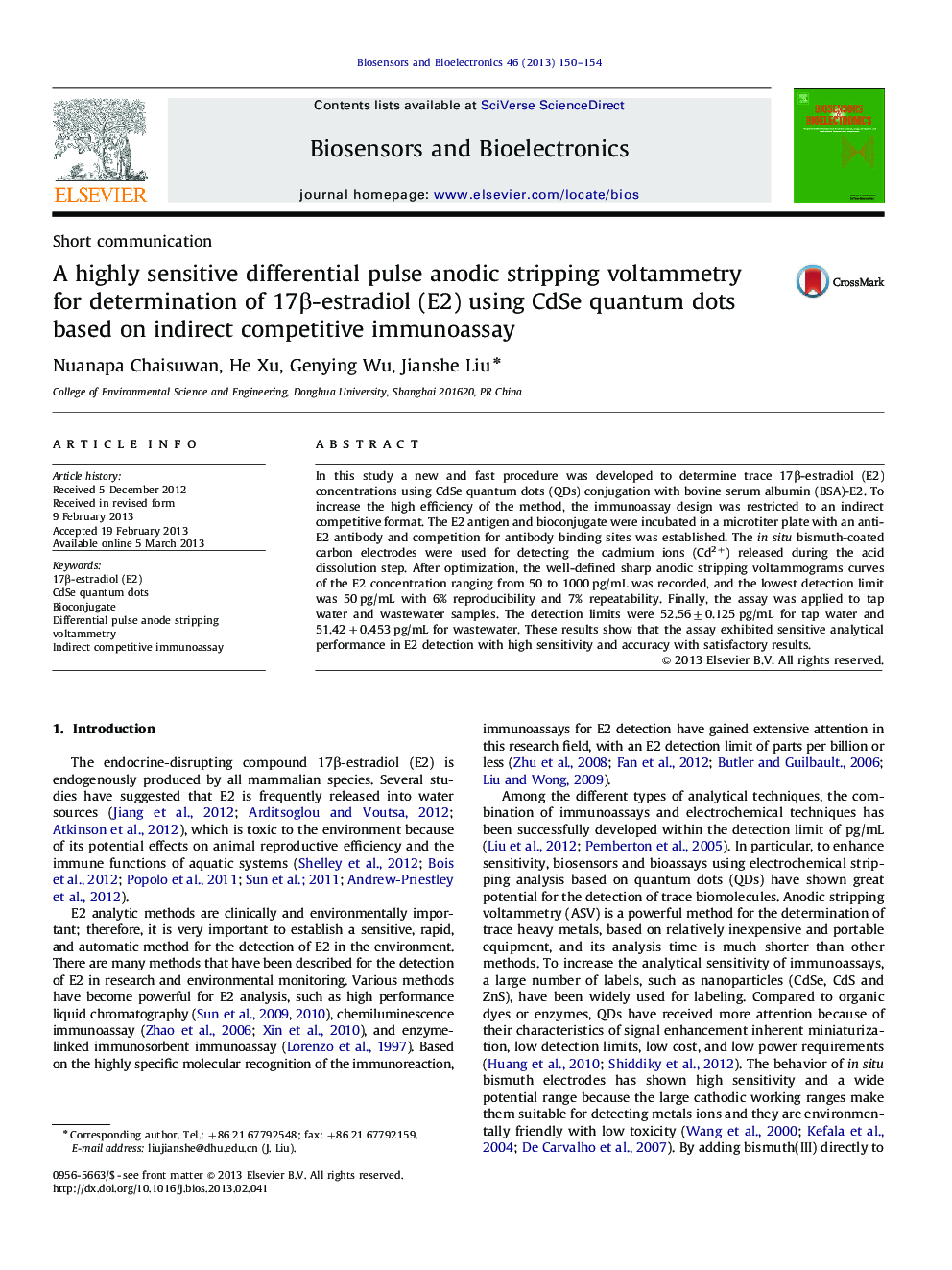| Article ID | Journal | Published Year | Pages | File Type |
|---|---|---|---|---|
| 867196 | Biosensors and Bioelectronics | 2013 | 5 Pages |
In this study a new and fast procedure was developed to determine trace 17β-estradiol (E2) concentrations using CdSe quantum dots (QDs) conjugation with bovine serum albumin (BSA)-E2. To increase the high efficiency of the method, the immunoassay design was restricted to an indirect competitive format. The E2 antigen and bioconjugate were incubated in a microtiter plate with an anti-E2 antibody and competition for antibody binding sites was established. The in situ bismuth-coated carbon electrodes were used for detecting the cadmium ions (Cd2+) released during the acid dissolution step. After optimization, the well-defined sharp anodic stripping voltammograms curves of the E2 concentration ranging from 50 to 1000 pg/mL was recorded, and the lowest detection limit was 50 pg/mL with 6% reproducibility and 7% repeatability. Finally, the assay was applied to tap water and wastewater samples. The detection limits were 52.56±0.125 pg/mL for tap water and 51.42±0.453 pg/mL for wastewater. These results show that the assay exhibited sensitive analytical performance in E2 detection with high sensitivity and accuracy with satisfactory results.
► This is the first report on development of electrochemical immunoassay for sensitive detection of 17β-estradiol (E2). ► A ‘bioconjugate’ comprising of CdSe QDs and BSA-E2 was used in competitive immunoassay with anti-E2 antibody and E2 antigen. ► The decrease in sample E2 concentration increased the amount of CdSe-BSA-E2 captured with the anti-E2 antibody. ► In addition to highly efficient detection techniques, indirect detection of Cd2+ by DPASV method instead of E2-antigen was done. ► The experimental parameters were optimized to obtain the best signal and lowest detection limit.
